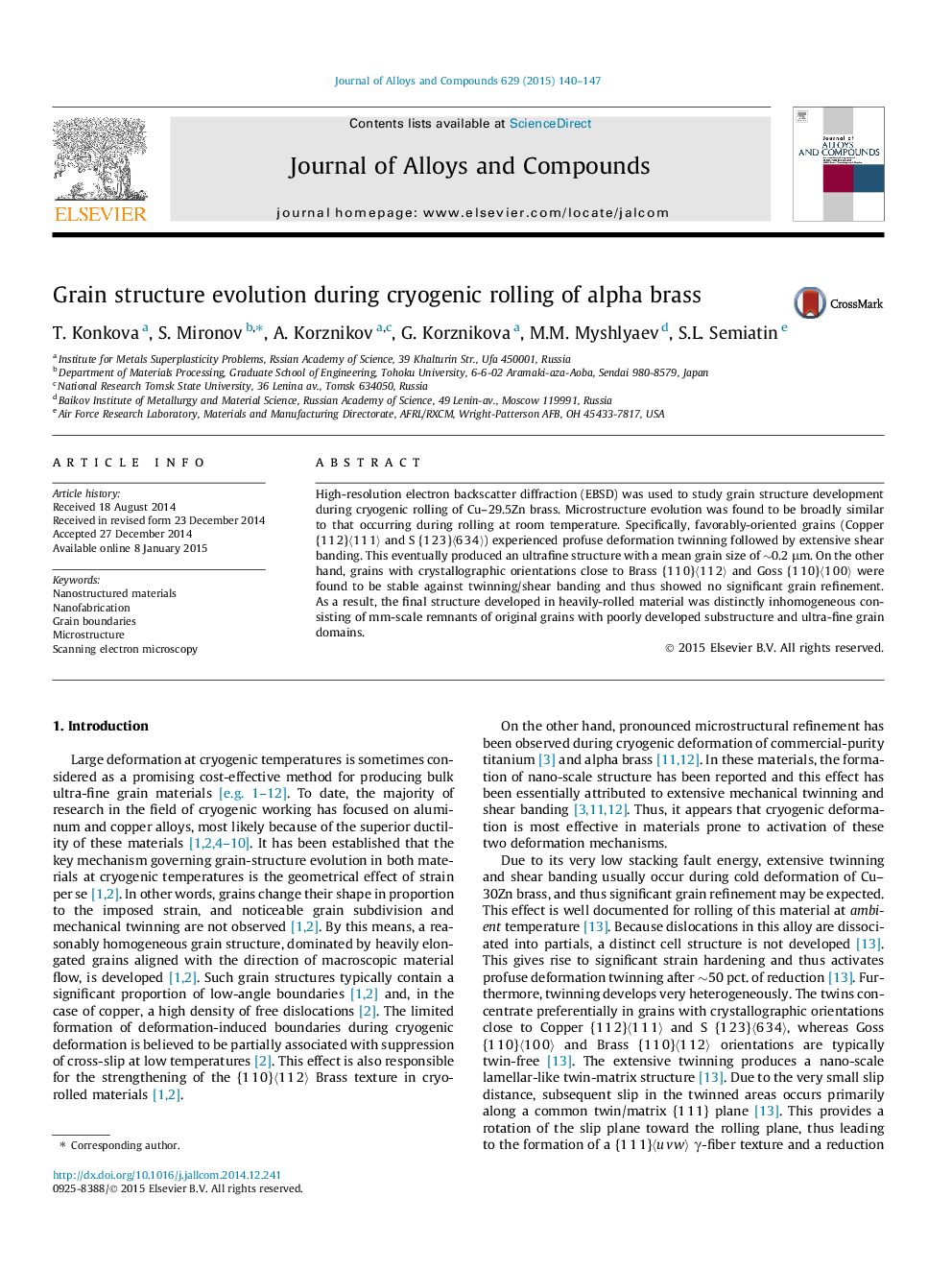| Article ID | Journal | Published Year | Pages | File Type |
|---|---|---|---|---|
| 1609727 | Journal of Alloys and Compounds | 2015 | 8 Pages |
Abstract
High-resolution electron backscatter diffraction (EBSD) was used to study grain structure development during cryogenic rolling of Cu-29.5Zn brass. Microstructure evolution was found to be broadly similar to that occurring during rolling at room temperature. Specifically, favorably-oriented grains (Copper {1 1 2}ã1 1 1ã and S {1 2 3}ã6 3 4ã) experienced profuse deformation twinning followed by extensive shear banding. This eventually produced an ultrafine structure with a mean grain size of â¼0.2 μm. On the other hand, grains with crystallographic orientations close to Brass {1 1 0}ã1 1 2ã and Goss {1 1 0}ã1 0 0ã were found to be stable against twinning/shear banding and thus showed no significant grain refinement. As a result, the final structure developed in heavily-rolled material was distinctly inhomogeneous consisting of mm-scale remnants of original grains with poorly developed substructure and ultra-fine grain domains.
Keywords
Related Topics
Physical Sciences and Engineering
Materials Science
Metals and Alloys
Authors
T. Konkova, S. Mironov, A. Korznikov, G. Korznikova, M.M. Myshlyaev, S.L. Semiatin,
